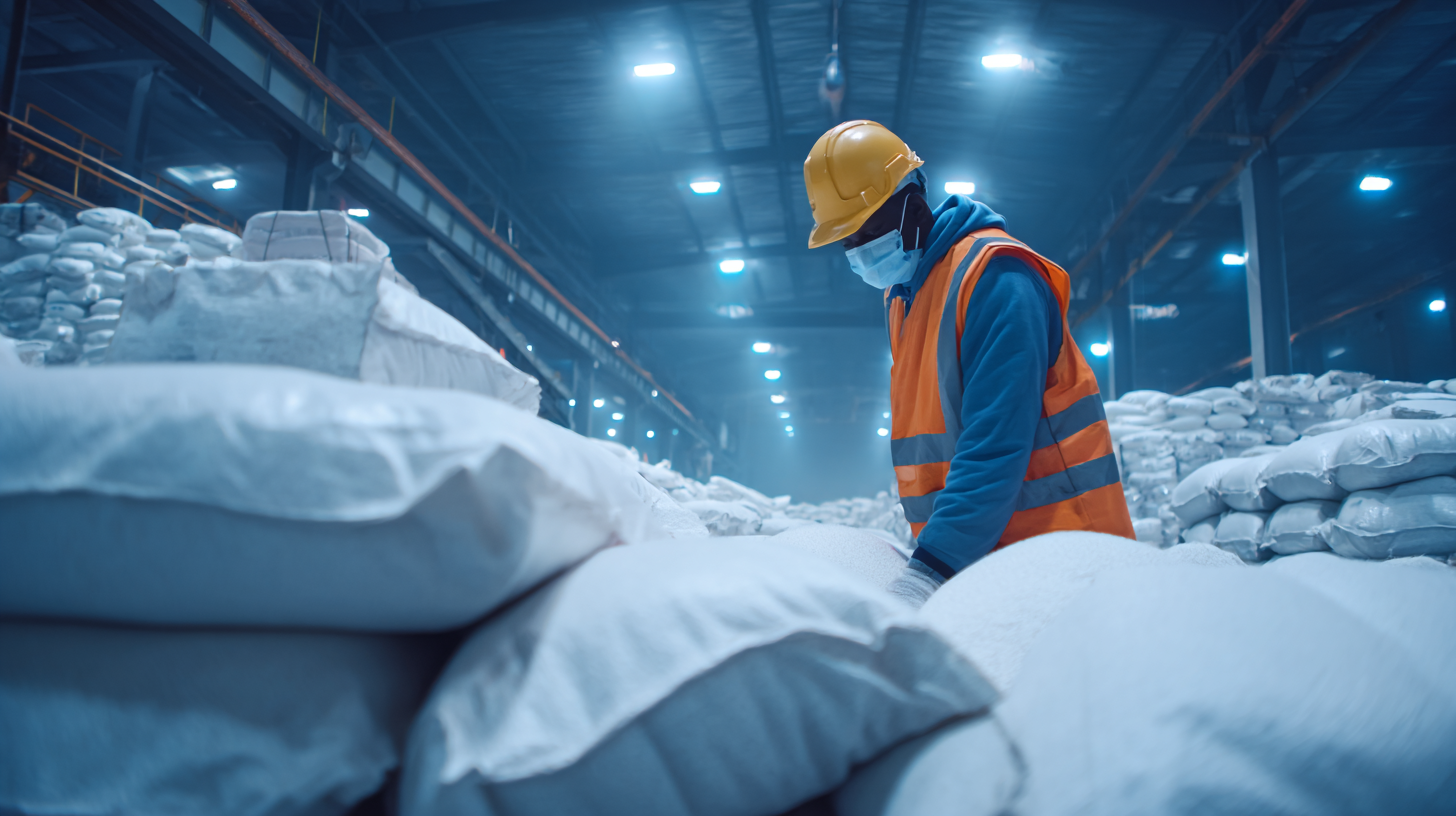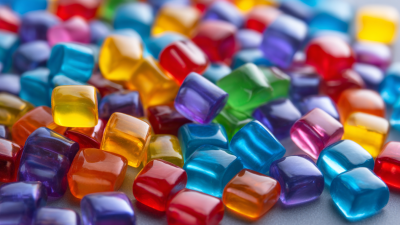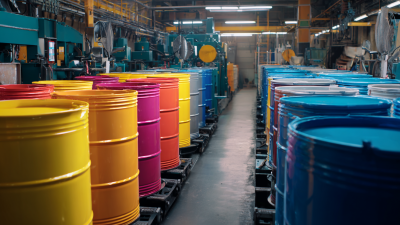- Home
- Masterbatch
- Additive Masterbatch
- Anti-Block Masterbatch
- Anti-Fog Masterbatch
- Anti-Microbial Masterbatch
- Anti-Oxidant Masterbatch
- Anti-Static Masterbatch
- Anti-Termite & Rodent Masterbatch
- Desiccant / Anti-Moisture Masterbatch
- Optical Brightener Masterbatch
- Flame Retardant Masterbatch
- Slip Masterbatch
- Polymer Processing Aid (PPA) Masterbatch
- UV Masterbatches
- VCI Additive Masterbatch
- Filler Masterbatch
- Black Masterbatch
- White Masterbatch
- Color Masterbatch
- Mono Masterbatches
- Special Effect Masterbatches
- EVA Masterbatch
- OXO Biodegradable Masterbatch
- XLPE Masterbatch
- Cable Masterbatch
- Nylon Masterbatch
- TPU Masterbatch
- Additive Masterbatch
- Compound
- Market
- Company
- Blog
- Contact Us
Exploring the Benefits of Using White Masterbatch in Sustainable Plastic Production
In the quest for sustainable plastic production, the role of white masterbatch has gained significant attention. White masterbatch is a concentration of pigments and additives that significantly enhances the opacity and brightness of plastics, thereby reducing the need for excessive raw materials. According to a report by Smithers Pira, the global market for masterbatch was valued at approximately $12 billion in 2021, with a projected annual growth rate of around 5% through 2026. This growth is largely driven by the increasing demand for environmentally friendly products and the growing emphasis on the circular economy in the plastics industry. Moreover, the use of white masterbatch can lead to a reduction in carbon footprint, as companies can optimize the use of polymers and minimize waste during production. As manufacturers seek cost-effective and sustainable solutions, white masterbatch emerges as a key player in transforming the landscape of plastic manufacturing.

Benefits of White Masterbatch in Enhancing Plastic Sustainability
 The use of white masterbatch in plastic production offers significant benefits for enhancing sustainability in the industry. According to a report by the Plastics Industry Association, the demand for sustainable plastic solutions has increased by 25% over the past five years, demonstrating a strong market shift towards eco-friendly practices. White masterbatch, known for its ability to improve the opacity and brightness of plastic, can reduce the need for additional colorants, leading to decreased reliance on energy-intensive production processes. By optimizing the formulation of plastics, manufacturers can effectively lower their carbon footprint and improve resource efficiency.
The use of white masterbatch in plastic production offers significant benefits for enhancing sustainability in the industry. According to a report by the Plastics Industry Association, the demand for sustainable plastic solutions has increased by 25% over the past five years, demonstrating a strong market shift towards eco-friendly practices. White masterbatch, known for its ability to improve the opacity and brightness of plastic, can reduce the need for additional colorants, leading to decreased reliance on energy-intensive production processes. By optimizing the formulation of plastics, manufacturers can effectively lower their carbon footprint and improve resource efficiency.
Additionally, incorporating white masterbatch contributes to recyclability. Research indicates that using masterbatches can enhance the mechanical properties of recycled plastics, making them more robust and viable for multiple reuse cycles. This not only promotes a circular economy but also addresses the growing issue of plastic waste. For example, studies have shown that recycled plastics infused with white masterbatch exhibit 30% better durability compared to their non-enhanced counterparts.
Tip: When selecting a white masterbatch, consider the percentage of titanium dioxide used, as higher concentrations can further improve reflectivity and stability, which are essential for maintaining product quality.
Tip: Collaborate with suppliers who prioritize eco-friendly materials in their masterbatch formulations to align with sustainability goals effectively while maintaining product performance.
Understanding the Role of White Masterbatch in Reducing Carbon Footprint
The utilization of white masterbatch in sustainable plastic production plays a pivotal role in reducing the carbon footprint of the manufacturing process. White masterbatch, which is a concentrated mixture of pigments, additives, and carriers, enhances the aesthetic and functional properties of plastics. By allowing for the production of high-quality, opaque films and containers, it reduces the amount of raw material needed and minimizes waste. The integration of white masterbatch not only streamlines the production process but also promotes greater recycling possibilities, contributing to a circular economy and decreasing the reliance on virgin materials.
Furthermore, the environmental benefits extend beyond production to the entire lifecycle of plastic products. With improved efficiency and reduced resource consumption, products made with white masterbatch can lead to fewer greenhouse gas emissions during both the manufacturing and disposal phases. This aligns with broader climate goals, such as those outlined in the Paris Climate Agreement, which emphasizes the need for immediate actions across various sectors to cut emissions and combat climate change effectively. By adopting innovative materials like white masterbatch, the plastics industry can significantly mitigate its impact on the environment and contribute to sustainable development efforts.
Comparative Analysis: White Masterbatch vs. Traditional Pigmentation Methods
The comparative analysis of white masterbatch and traditional pigmentation methods reveals significant advantages of using masterbatch in sustainable plastic production. Traditional methods often rely on inorganic pigments that can have detrimental environmental impacts due to their toxicity and non-biodegradability.
In contrast, white masterbatch, which comprises a concentrated mixture of pigments and additives, allows for precise control over coloration and performance without introducing harmful substances into the environment. This leads to not only a cleaner manufacturing process but also a reduced carbon footprint.
Furthermore, the effectiveness of white masterbatch in achieving uniform color and enhancing the properties of the final product makes it a more efficient choice for manufacturers. It can facilitate lower dosage requirements, resulting in cost savings and reduced waste. While traditional pigments often necessitate more processing steps and may lead to inconsistent results, white masterbatch simplifies the production chain, ensuring consistent quality and sustainability. By leveraging modern formulations, producers can meet rigorous environmental standards while fulfilling consumer demands for efficiency and product integrity.
Innovative Applications of White Masterbatch in Eco-Friendly Plastic Products
The application of white masterbatch in eco-friendly plastic products has opened up innovative avenues for sustainable production. Utilizing white masterbatch allows manufacturers to create more visually appealing products while minimizing the need for additional coloring agents, which often contain harmful chemicals. This not only enhances the aesthetic appeal but also simplifies the recycling process, as fewer additives mean a lower risk of contamination.

Moreover, white masterbatch can improve the opacity and brightness of plastic materials, making them suitable for various applications, including packaging, automotive parts, and consumer goods. By integrating this technology, companies can produce lightweight, durable products that align with sustainability goals. For instance, in the food packaging industry, using white masterbatch ensures compliance with safety standards and improves the shelf life of products, showcasing the dual benefits of functionality and environmental responsibility.
Future Trends: Advancements in White Masterbatch for Sustainable Manufacturing
The advancement of white masterbatch technology is pivotal in the quest for sustainable manufacturing practices. As industries increasingly prioritize eco-friendly materials, the development of high-performance white masterbatches is transforming plastic production. Innovations in this area focus on enhancing opacity, brightness, and durability while also minimizing the environmental impact. For instance, new formulations are being developed that use bio-based or recycled components, reducing reliance on virgin materials and promoting circular economy principles.
Moreover, the incorporation of advanced additives in white masterbatch enhances its ability to encapsulate pigments and improve the processing efficiency. This is crucial as manufacturers seek to lower energy consumption and reduce waste during production. Future trends also indicate a move towards smarter masterbatch solutions that can adapt their properties based on the application requirements, ensuring optimal performance without compromising sustainability goals. By embracing these advancements, the plastics industry is set to make significant strides towards achieving a more sustainable future while meeting consumer demand for eco-conscious products.
Related Posts
-

Revolutionizing Repair: Understanding the Science Behind Plastic Fillers and Their Environmental Impact
-

Unlocking the Future of Plastics: How Anti Block Masterbatch Enhances Packaging Performance
-

Unlocking the Potential of Filler Masterbatch: Innovations in Polymer Manufacturing
-

Discover How Slip Masterbatch Revolutionizes Plastic Processing Efficiency
-

Exploring the Future of EVA Masterbatch: Trends and Innovations in Polymer Additives for 2024
-

Unlocking Creative Potential: How Color Master Batches Transform Plastic Manufacturing
